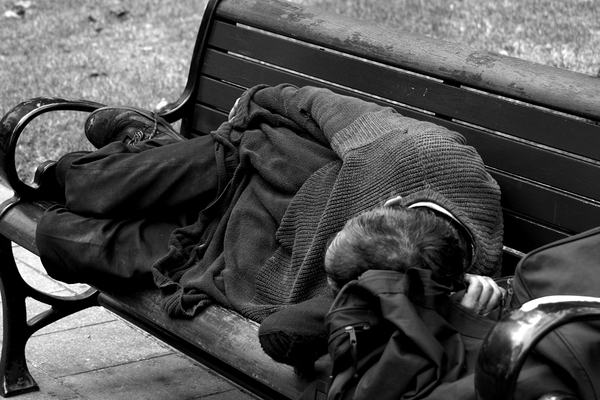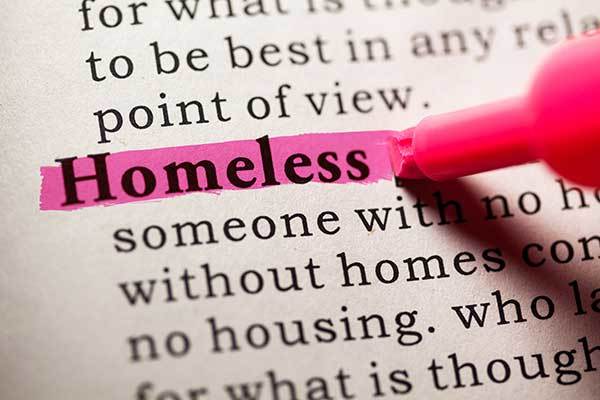Rough sleeping strategy ‘must tackle root causes’
The government’s new rough sleeping strategy will fail unless Whitehall departments act in concert to tackle its root causes, a coalition of homelessness groups has warned.
Housing secretary James Brokenshire today launched £100m strategy intended to end rough sleeping by 2027.
The Rough Sleeping Advisory Group said: “We welcome the new funding commitment for dedicated outreach teams and for emergency bed spaces, while the announcement of nationwide trials of a ’somewhere safe to stay’ duty and the review of the vagrancy act have the potential to pave the way for desperately needed reforms, preventing people sleeping rough.
“However, for the strategy to work, the government must also set out bold, cross-departmental plans to tackle the root causes of all forms of homelessness, and prevent it from happening in the first place.”
It said this should include construction of more social housing, greater security for renters, better access to benefits to help people keep their homes, reversal of policies that leave migrants homeless and healthcare, mental health and substance misuse services accessible to those in need.
The group said: “To end rough sleeping by 2027, the government must build on today’s welcome announcement and set out plans to prevent homelessness from occurring in the first place. The ambitious target that the government has set itself will only be achieved if it is equally bold on addressing the policies that cause rough sleeping."
Its members are: Homeless Link, Crisis, the National Housing Federation, Shelter, St Basils, St Mungo’s and Thames Reach.
Lord Gary Porter, chair of the Local Government Association, welcomed “other government departments with responsibilities for areas such as employment, mental health and justice begin to acknowledge their critical role in reducing rough sleeping”.
But he said rough sleeping was “only the tip of the iceberg - right now, councils are currently housing over 79,000 homeless families and 123,000 children in temporary housing”, and should be allowed to build more homes and be gain resources to coordinate services for those at risk of homelessness.
David Orr, chief executive of the National Housing Federation, said: “If we’re to bring about a lasting end to rough sleeping we need targeted investment in new homes for rough sleepers, a significant increase in homes for social rent overall, and a full assessment of the impact of welfare reform on rough sleeping.”
John Healey, shadow housing secretary, said the promised £100m was not new money but had been reallocated for other budgets.
Gavin Smart, deputy chief executive of the Chartered Institute of Housing, said: "The proposals on their own won’t bring lasting solutions to homelessness unless government invests in more genuinely affordable homes to rent."
He said the government should rebalance its funding so that affordable housing received a fairer share of the £53bn total than the 21% it had been allocated.
Mr Smart added: "We also think government should properly fund new homes at the lowest rents. This is essential if everyone is to have a decent, affordable place to call home."
At a glance: Homelessness Reduction Act 2017
The Homelessness Reduction Act 2017 came into force in England on 3 April 2018.
The key measures:
- An extension of the period ‘threatened with homelessness’ from 28 to 56 days – this means a person is treated as being threatened with homelessness if it is likely they will become homeless within 56 days
- A duty to prevent homelessness for all eligible applicants threatened with homelessness, regardless of priority need
- A duty to relieve homelessness for all eligible homeless applicants, regardless of priority need
- A duty to refer – public services will need to notify a local authority if they come into contact with someone they think may be homeless or at risk of becoming homeless
- A duty for councils to provide advisory services on homelessness, preventing homelessness and people’s rights free of charge
- A duty to access all applicants' cases and agree a personalised plan
Cathy at 50 campaign
Our Cathy at 50 campaign calls on councils to explore Housing First as a default option for long-term rough sleepers and commission Housing First schemes, housing associations to identify additional stock for Housing First schemes and government to support five Housing First projects, collect evidence and distribute best practice.













